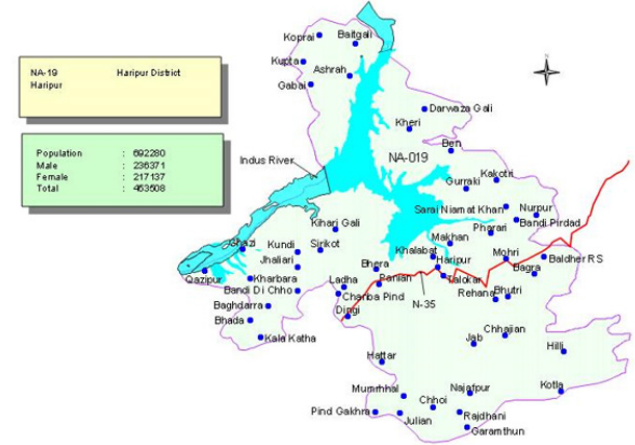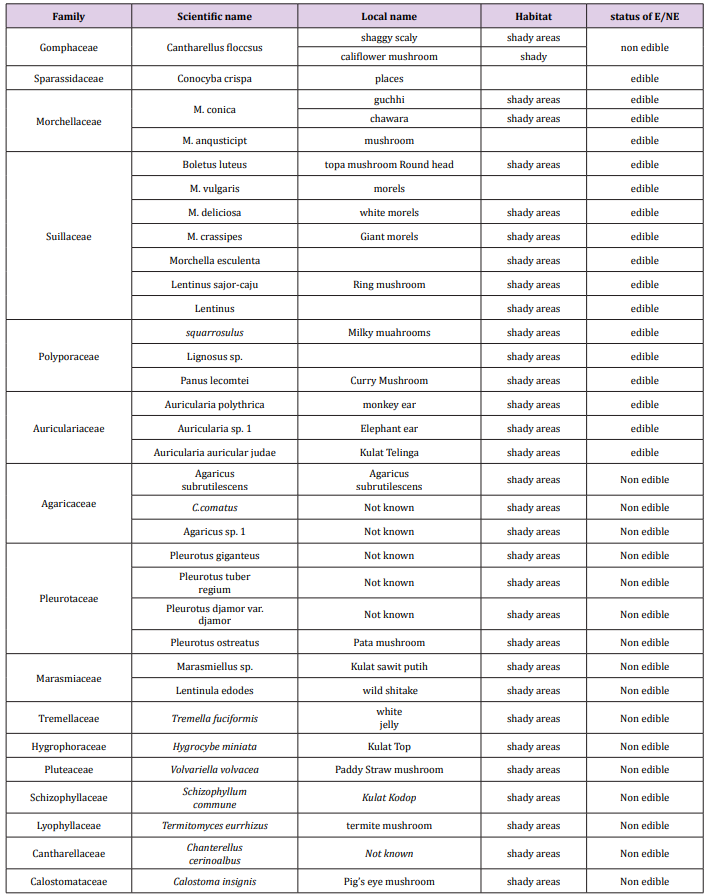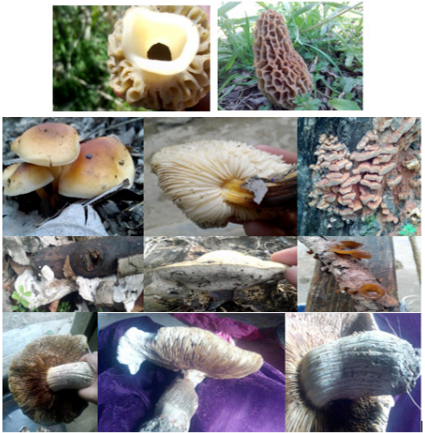Diversity and Characterization of Mushrooms from District Haripur, KPK, Pakistan
Introduction
For their value as nutritional Mushrooms are highly prized [1], and medicinal foods for their use in cosmetics [2], In every field including in agriculture, industry, medicine, food industry, textiles, and bioremediation Fungi play an important role [3]. Into three different forms yeast, moulds and macrofungi or mushrooms Fungi can be broadly classified or mushrooms. Large, conspicuous spore bearing structures and have fleshy, tough umbrella like sporophores that bear holobasidia on the surface of gills or lamellae that hang down from the cap belonging to basidiomycetes and ascomycetes are the Macrofungi [4]. Depending on the composition of tree species and other substrates Mushrooms are found in varied types of habitats. Due to favourable climate and abundance of flora during that time Mushrooms are abundant in spring to autumn while less distributed in dry and hot seasons [5]. By having the great economic importance they serve as the essential part of the human diet and are used as both medicine and food for centuries, mushrooms are rich in pharmacological properties, easy to cultivate, requires low resources and area, and can be grown all over the world [6]. most important organisms on Earth, both in terms of a high species richness and their functional roles in aquatic and terrestrial ecosystems [7]. for species identification there is need of a wide taxonomical knowledge and a high field sampling effort [8].
The knowledge of the macrofungal component represents a useful tool for the establishment of priorities for sites of conservation and an indicator of forest worries [9]. In the ethology of acute exogenous intoxication Poisonings with mushrooms have an important position and are one of the main reasons for hospitalization [10]. Causing organ failure with potentially fatal outcome Death cap (Amanita phalloides) poisoning is a serious medical condition [11]. After mushrooms ingestion It is a toxic mushroom responsible for the majority of deaths occurring [12]. All deaths due to mushroom poisoning It is the cause of 90- 95%. Rather rare Mushroom poisonings with fly agaric (Amanita muscaria) and panther cap (Amanita pantherina). Due to the short growing season and a high demand to wild mushrooms a large number of edible wild mush rooms are seasonally harvested, as an example up to 700 species of wild mushrooms are known to be edible and are utilized by local indigenous people as both a source of food and income in china. Due to the uniqueness to the area many mushrooms are would drive up the market price of these species, and in turn encourage over harvesting. For the local people the importance and their availability is important there they think mushrooms priceless so in order to document the diversity of these mushrooms both in terms of edible and non-edibles this study is conducted in district Haripur.
Material and Methods
Methodology
Study Area: Study area was conducted in the district Haripur KPk Pakistan. Haripur is the main city of the Haripur District in Hazara, Khyber Pakhtunkhwa in Pakistan, with Swabi and Buner to the west, some 65 km north of Islamabad and 35 km south of Abbottabad. It is in a hilly plain area at an altitude of 520 m. Having the 33.9946° N, 72.9106° E. With the pleasant weather and hilly areas with grasses and pine trees (Figure 1).
Sampling and Data Collection
Investigation of mushrooms were carried out during the whole year from January 2018 to December 2018 Sampling was performed by using 20 circular (4-m radius) plots (60 in total) selected in each study site along line-transects and for macrofungi following a standardized sampling method. Each plot was 20 m away from the next one. For each site total sample area was approximately 1,000 m2 . Species identification was performed by analyzing the macroand microscopically characteristics of the collected specimens and the relevant literature.
Results
During the present study total of 19 families including 40 species were recorded enlisted in Table 1. The highest number of wild edible mushroom species recorded was of the Pleurotaceae family (Pleurotus pulmonarius, P. giganteus, P. tuberregium, P. djamor var. djamor, and P. djamor var. roseus). The second highest number of species recorded was from the Polyporaceae family (Lentinus sajor-caju, L. squarrosulus, and Panus lecomtei). All three species are white rot fungi with distant or crowded lamellae (as in Agaricales). Auriculariaceae family also comprises three species (Auricularia polythrica, Auricularia auricular-judae and Auricularia sp. 1) which are all edible. Among 40 wild edible mushrooms, only five were reported for medicinal uses. These mushrooms are Pleurotus tuber-regium, Auricularia sp., Xylaria sp., Lignosus sp. And Schizophyllum commune. The rare species of Termitomyces eurhizae (Lyophyllaceae) and Hygrocybe miniata (Hygrophoraceae) from lowland forests was found in this study. An edible, Calostoma insignis (Calostomataceae) and poisonous Agaricus pracelaresquamosus were also recorded (Figure 2).
Discussion
Knowledge on edible mushrooms is usually transferred from the older generation to the younger generation. Indigenous people living in the rural forest mainly use natural resources to sustain their subsistence [13]. Traditionally, older generations have vast knowledge on the uses of wild mushrooms. The younger generation only recognize the common edible wild mushrooms species. Currently, most of the younger generation have migrated to cities for job opportunities. Rural area have more forest coverage compared to urban areas. Previous studies have shown that depletion of ethno mycological knowledge may happen when people move to urban areas from rural villages [14]. Urbanization and land integration are two significant reasons that lead to the instant loss of their native knowledge from one generation to the next [15]. Similar results on these criteria in determining the edible mushrooms have been reported from other studies as well [16]. Several studies reported that Pleurotus species are valuable medicinal mushrooms [17]. In the Southeast Asia region, a diverse variety of wild mushroom have been found at local markets [18].
Conclusion
It is the first reported study from District Haripur. Local people were having very little knowledge on mushrooms. This will be helpful for the local community and researchers.
For more Articles on : https://biomedres01.blogspot.com/





No comments:
Post a Comment
Note: Only a member of this blog may post a comment.